Crazy Browns
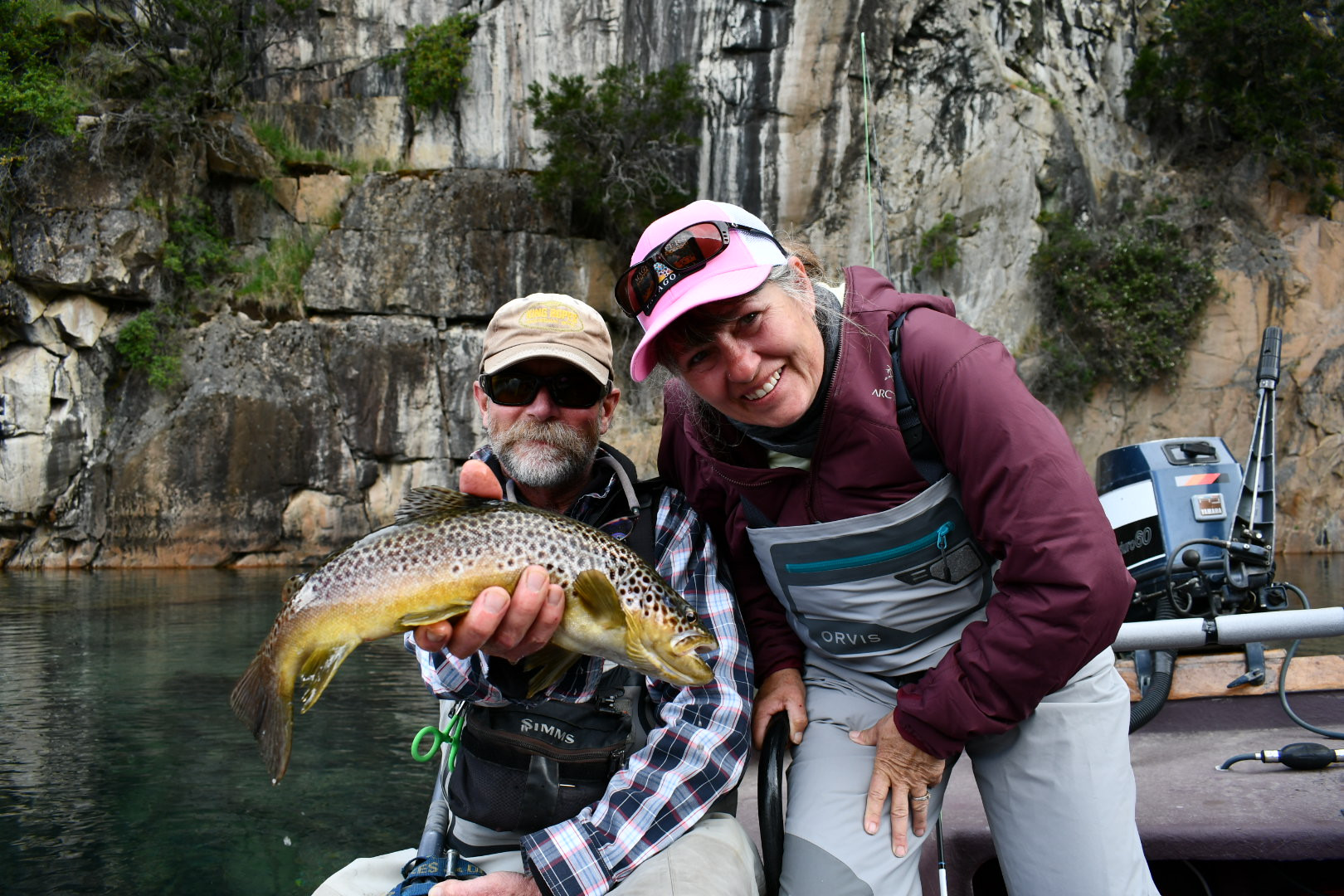
Monty, our guide, explained through a story one of his first big insights to fishing in Chilean Patagonia: “One day while fishing I saw a bird flying along just above the river. A Brown Trout broke water, leapt completely out and literally did a 180 in the air and caught that bird. I thought to myself: ’I need a bigger fly!’ These fish are excited by action. Move your fly. Twitch, twitch, twitch. We’re not doing any of that mamby-pamby dead-drift stuff like we do in the States.”
Monty is an expat from Wyoming. He first came to Patagonia in the early 1990s. He met and married a Chilean woman and now has two teenage boys with her. He says he doesn’t mind seeing his children look at a computer screen because it means they’re exhausted from mountain biking, kayaking, fishing, hiking or some other outdoor activity.
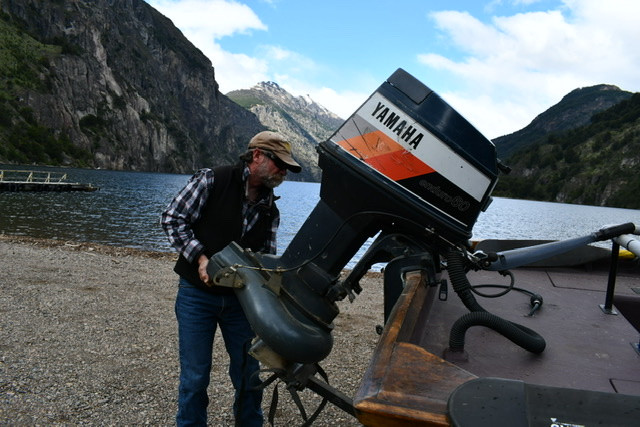
Monty gave us a book of stories and an expats perspective as we spent our first day with he as our guide from Magic Waters Patagonia Lodge near Coyhaique, Chile. One story was his point of view on the timeline of this regions transformation over the past 30 years. The land was originally thick forest, then subsistence dirt farmers slashed and burned the trees to create pasture and planted fields, which became incredibly productive due to the 60 inches of rain and rich, volcanic soil. The slash and burn farmers have largely sold all their lands to farmers and ranchers. Recreational tourism is slowly growing through the area and that, too, has impacted the look of the land.
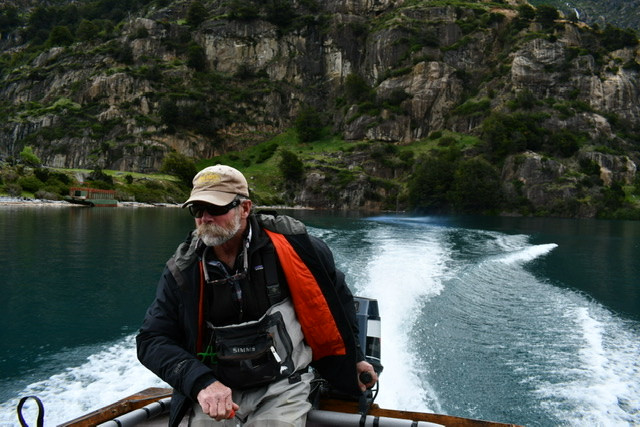
Monty piloted a boat he’d built himself 25 years ago. It was made from plywood, and it had a Yamaha outboard motor with a jet-drive, much like we use in Alaska, except it was an ancient two-stroke and left a cloud of blue smoke wherever it went.
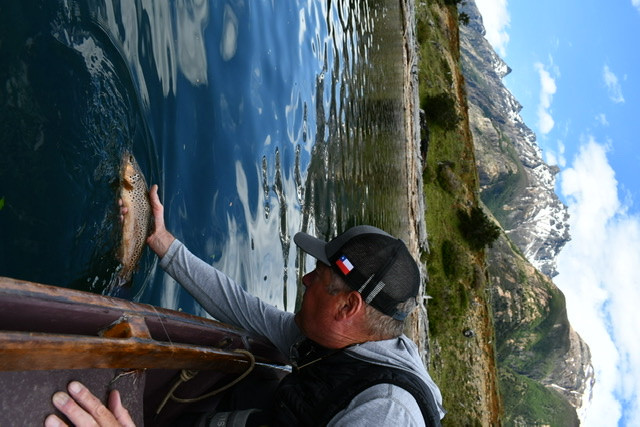
We ran the boat through three different lakes and two rivers. The surrounding mountains were stunning, towering a thousand meters or more above us and in places met the lake with sheer rock walls. The rock walls were productive fishing places because the fish had learned to wait beneath them to catch terrestrial insects that lose their footing and fall to the water. Lynnette cast a giant dry “beetle” imitation then was instructed to twitch it the moment it settled. We’d see trout come swimming up from unknown deaths in the clear water to literally smash the fly.
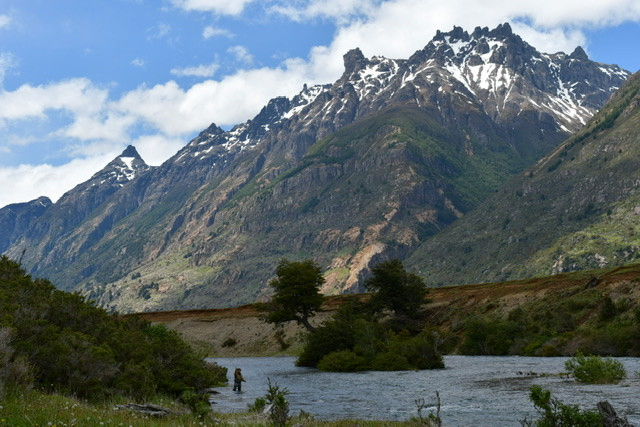
I worked a streamer in the lake and connecting river. Again, action was the order of the day. Early on, I swung the fly then noticed as the day went on the more erratic I could make it move the more aggressive the trout became.
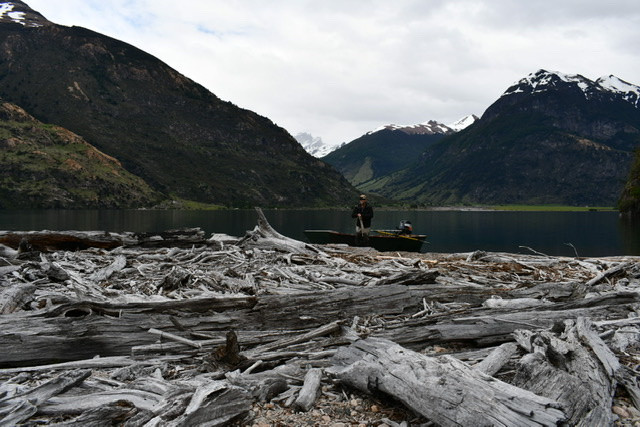
As we headed back to the boat launch after a delightful day we noticed a water fall cascading several hundred meters off the mountain into a pool and short creek by the lake side. We asked Monty if we could stop to take a photo of it. As we beached the boat and grabbed the camera Monty handed me a rod. Brown trout, he explained, will sit below the waterfall and wait for it to bring terrestrial insects from the highlands, which conveniently fall into the pool and their waiting jaws.
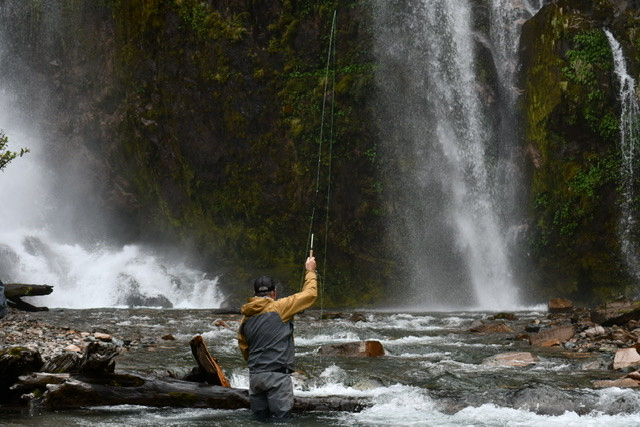
Pulling line and throwing casts, the fly dead drifted past a pocket. On the third cast I inadvertently skated the fly drawing it for a back cast. Almost immediately, a set of jaws, pointy-teeth and all, emerged from the pool to engulf the fly.
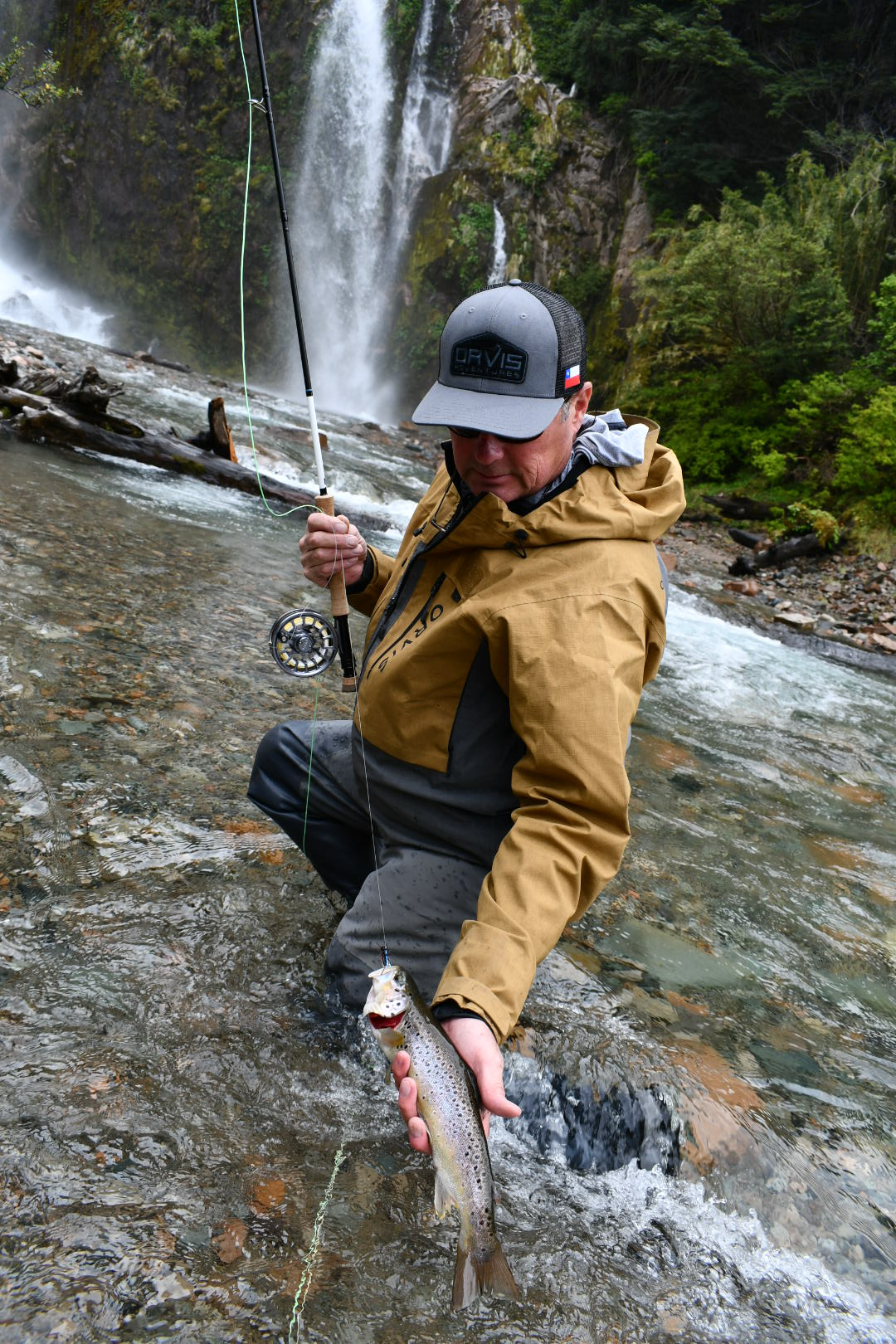
Move it, move it, move it.
